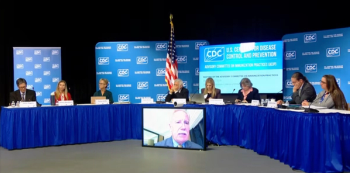
MRSA Threat at the Gym May be Exaggerated, Study Asserts
Community gym surfaces do not appear to be reservoirs for MRSA transmission, according to a study published in the March issue of the American Journal of Infection Control, the official publication of the Association for Professionals in Infection Control and Epidemiology.
The purpose of the study, conducted by researchers from the University of Florida College of Medicine, was to determine whether community gymnasium equipment surfaces could harbor staphylococcal colonies and to assess whether disinfection lowers the rate of bacterial transmission. A total of 240 samples were collected from three local gyms, before and after cleaning, at three different times. Each sample was analyzed for methicillin-resistant Staphylococcus aureus (MRSA) and methicillin-sensitive Staphylococcus aureus (MSSA). In all 240 samples, none were positive for MRSA or MSSA.
"Despite the increasing incidence of community-acquired MRSA/MSSA infections, the gyms that we studied do not appear to be significant sources of staphylococcal infection," says lead investigator Kathleen Ryan, MD, of the Department of Pediatrics in the College of Medicine at the University of Florida. "Aggressive and expensive surface disinfection programs may not be warranted in certain gymnasium settings."
MRSA is known to remain viable on dry surfaces for extended periods. With rising concerns about spread of infection, gyms have begun extensive cleaning programs, and some offer complimentary wipes for use by the patrons.
Equipment tested in each gym included two separate gym mats, benches, dumbbells, cardio machines, and weight machines. The first swabbing was completed at midday to serve as a baseline. A second sample was obtained in the two gyms that offered wipes shortly after equipment was cleaned with the wipes provided for discretionary use. A third sample was obtained shortly after equipment was cleaned according to the gyms standard cleaning practices.
"This study supports the evidence that transmission [of MRSA] is more likely to originate from skin-to-skin contact than skin-to-surface contact in the community," the authors write.
The authors acknowledge that broad conclusions should not be drawn from a study of this size and they suggest that future studies could swab recently used clothing of gym patrons, doorknobs, water fountains, or other areas within the locker room that might be more susceptible to colonization by MRSA and MSSA.
MRSA is an antibiotic-resistant bacteria that can lead to severe infections and is associated with approximately 19,000 deaths annually, according to the Centers for Disease Control and Prevention (CDC). The annual cost to treat MRSA in hospitalized patients is estimated at $3.2 billion to 4.2 billion.
Reference: AJIC 2011; 39 [2].
Newsletter
Stay prepared and protected with Infection Control Today's newsletter, delivering essential updates, best practices, and expert insights for infection preventionists.






